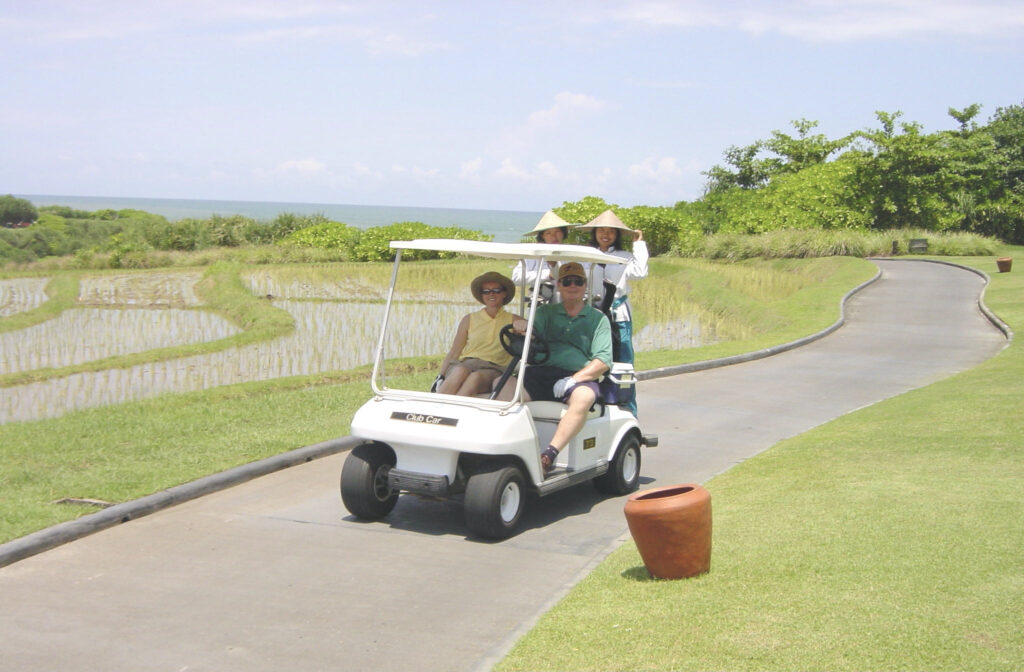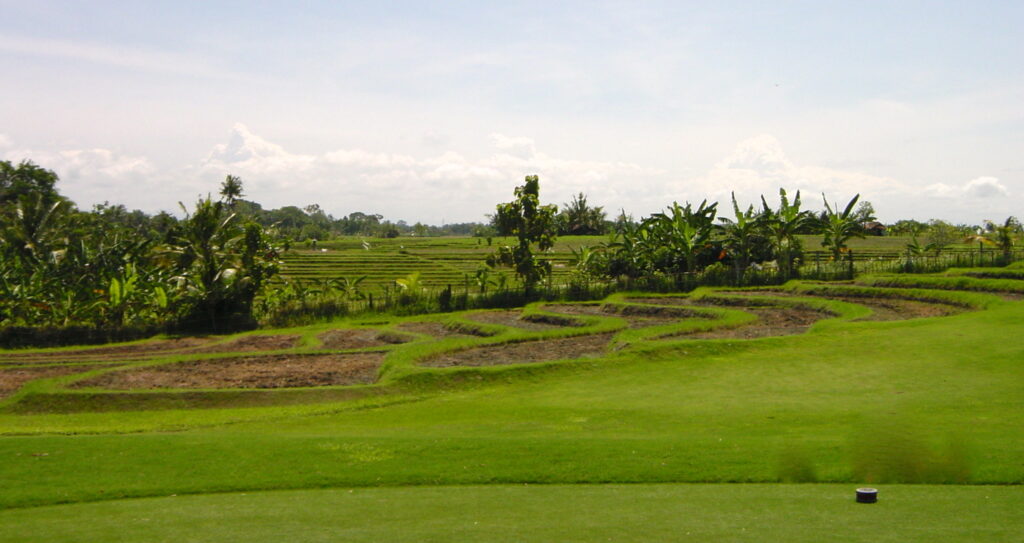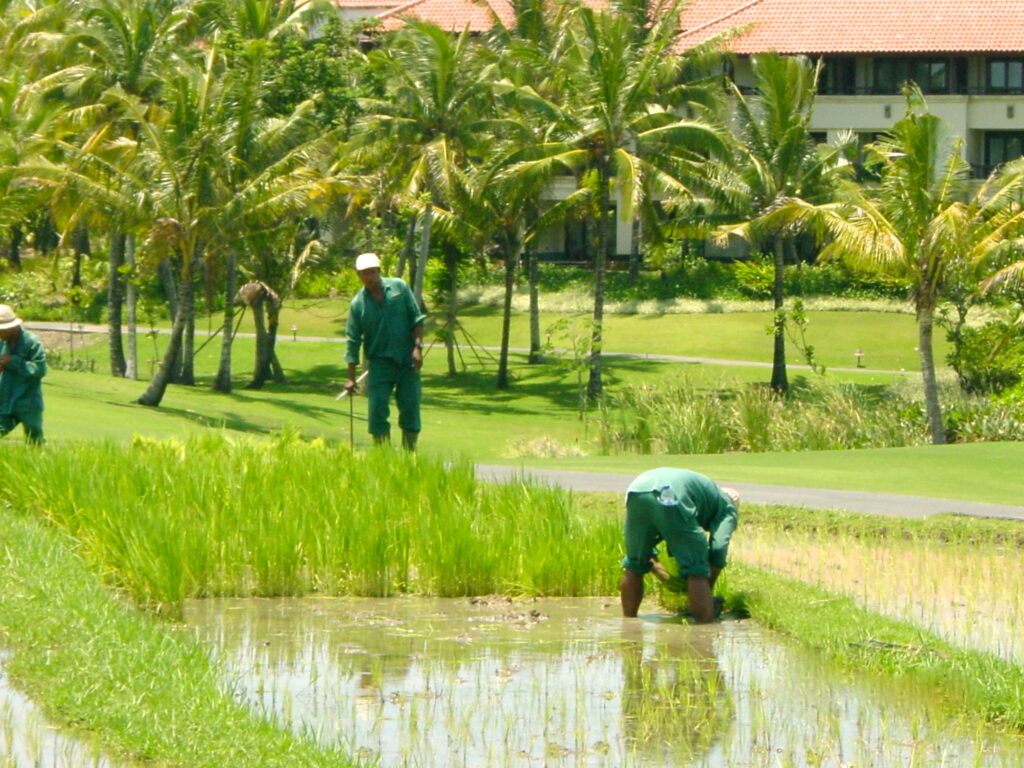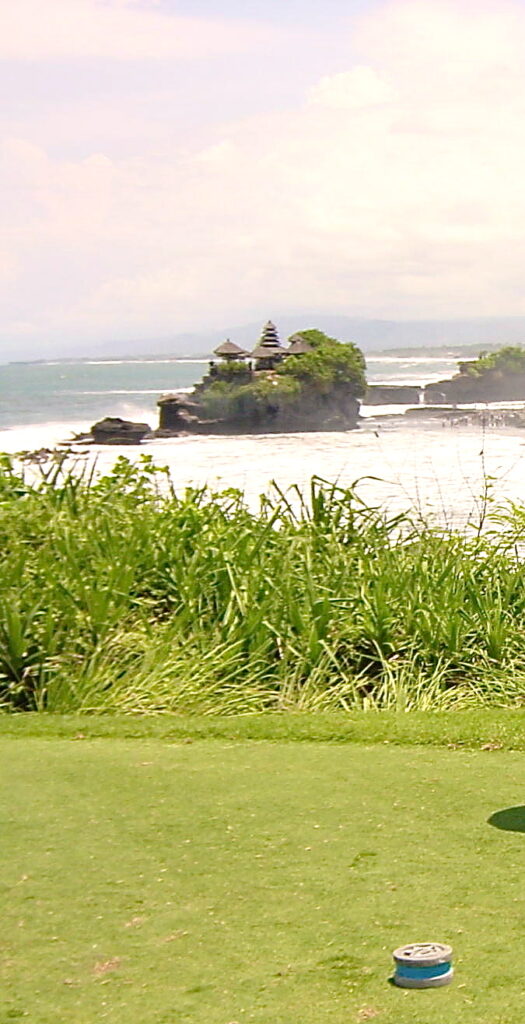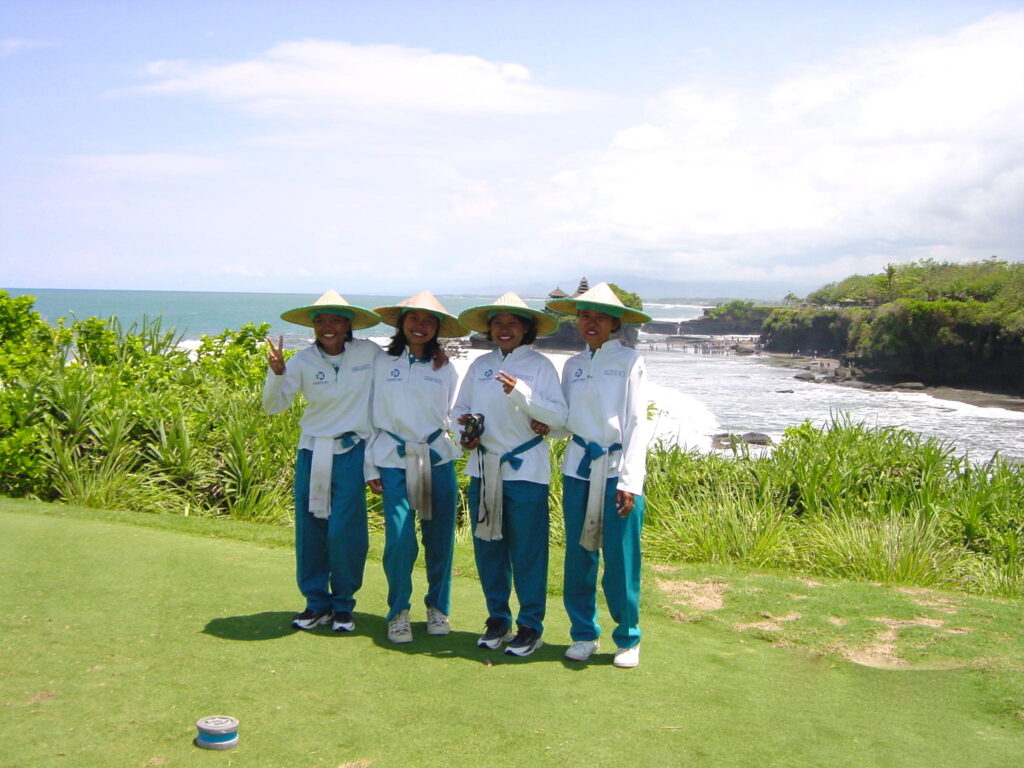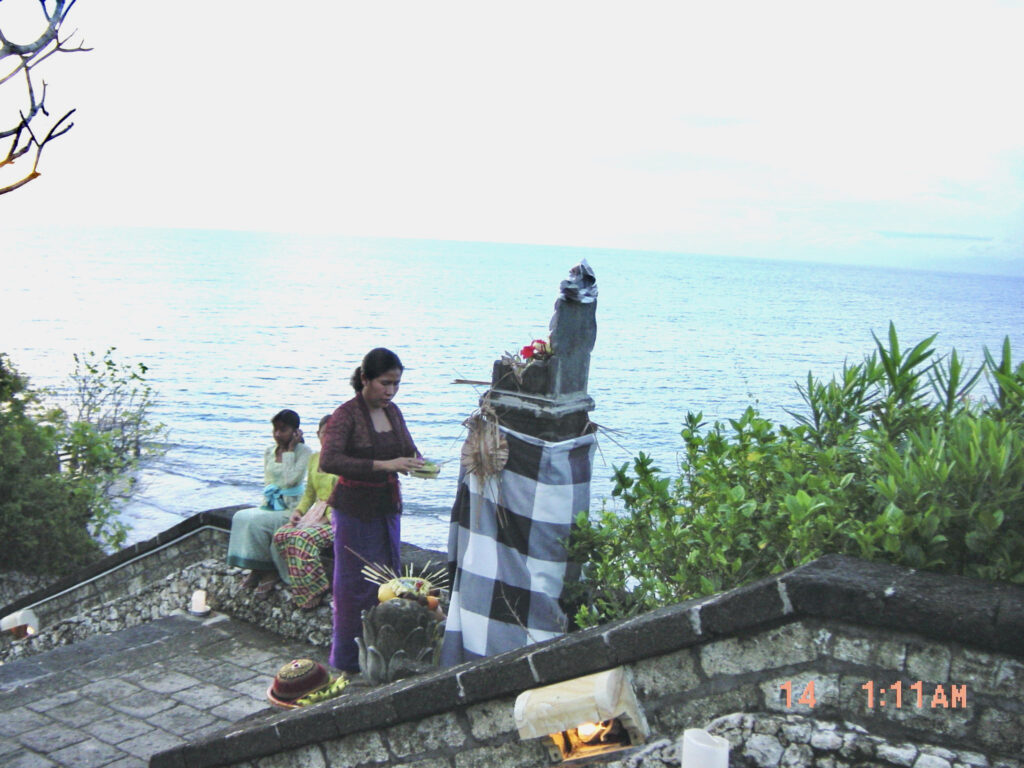My caddie briefly scouts the fairway and points to my ball lodged in the narrow berm of a soggy ditch alongside a rice paddy. Her encouraging smile offsets the outcome of my first drive and all eyes are on me as I give it my best shot. Mud flecks my face asI hear the cheers of my entourage.
Here, at Nirwana Bali Golf Club—run by the 5-star Pan Pacific Bali Resort in the secluded area of Tabanan in southwestern Bali—there is more to golf than hitting the ball until the final putt. It’s also about the Indian Ocean, the Tanah Lot temple, and the tropical climate. It’s another way to experience the Balinese landscape. Besides, the gracious ladies who caddy add a touch of Balinese spirituality to the game.
Something About Golf and Rice Fields
Fairways unfold up and down the terraced rice fields. I can’t ignore the barefooted farmers bent over the immersed paddies. Managed by the resort, they inform guests of the labor-intensive stages of growing rice. Here, the paddies are ornamental to this golf course, but rice farming is an intrinsic part of the island’s social, agricultural, and religious culture.
Known as Subak—which encompasses the rice fields and the farmers’ centuries-old irrigation system—this cultural landscape is designated as a UNESCO World Heritage Site.
Rice is at the center of life in Bali. Families grow it as their staple food, and it’s very revealing that rice and eat are the same word in Bahasa—Bali’s language. For this reason, they revere Bhatari Sri, the rice goddess and the mother of life, by committing to live in harmony with their environment, including on the golf course.
Going Zen on Hole Seven
It’s not easy to focus on the Nirwana 72-par golf course. The roaring ocean crashes against the cliff, the perfume of tropical flowers fills the air, and the lush jungle in the distance calls for attention.
The signature hole is particularly distracting as it overlooks the Tanah Lot temple below. Anchored on a rocky islet, it’s one of six temples built at a visible distance from one another. Religion is fairly new to the Balinese culture, but devotion is noticeable in the lovingly garnished shrines set in the most unusual places. It is said that Bali counts more temples than houses.
Balinese pilgrims and visitors stand on the beach, perhaps pondering the mythological poisonous serpent that guards the temple. It even guards them against any errant ball since I tee off in the other direction.
On this hole, thanks to my husband’s frustration with his rental clubs, and to the ever-serene composure of our caddies, we learn the secret of Balinese happiness: be kind to everyone because anyone could be Buddha—Balinese Hinduism has roots in Buddhism.
The Hole-After-Hole Lessons
The combination of paddies and fairways gives way to shots through valleys, from one cliff to another, and across a bridge over much-troubled waters. If an auspicious ball finds the fairway, it also finds the ominous incline toward the ocean. Besides, I can’t seem to get my balls to fly.
What’s more, I never had two caddies ride on the back of the golf cart and never played with a personal caddie either. I am impressed by how quickly she combines her knowledge of the course with her understanding of my skills. She knows where my ball landed and even lines up my putts.
On one downhill oceanside hole, I ask for a driver and she hands me a 3-wood, with a teasing grin on her face. I should aim for the right side of the fairway, she says. The ocean side…? Never mind, my topped ball scampers away and stops short of a sand trap. Down that slope, I discover that the ocean side leans toward the middle of the fairway. This Greg Norman’s design does give a player a break.
By the time we reach the eighteenth hole, I have learned that balls indeed fly lower and farther in the warm, humid air: as the warmer air rises, it causes less resistance to the ball’s flight, reducing the lift. There is also no bragging about my score, judging by the only ball left in my rental golf bag. Never mind, the experience was better than any net score.
- On the way to the first tee at Nirwana Golf Club in Bali, Indonesia (MCArnott)
- Rice paddies are golf hazards at Nirwana Golf course. (MCArnott)
- Bali’s cultural landscape of rice paddies (MCArnott)
- View of Tanah Lot temple from Hole #7 at Nirwana Bali Golf Club (MCArnott)
- The gracious caddies at Nirwana Bali Golf Club (MCArnott)
- A Balinese shrine (MCArnott)
First published 2014 Buckettriper.com

